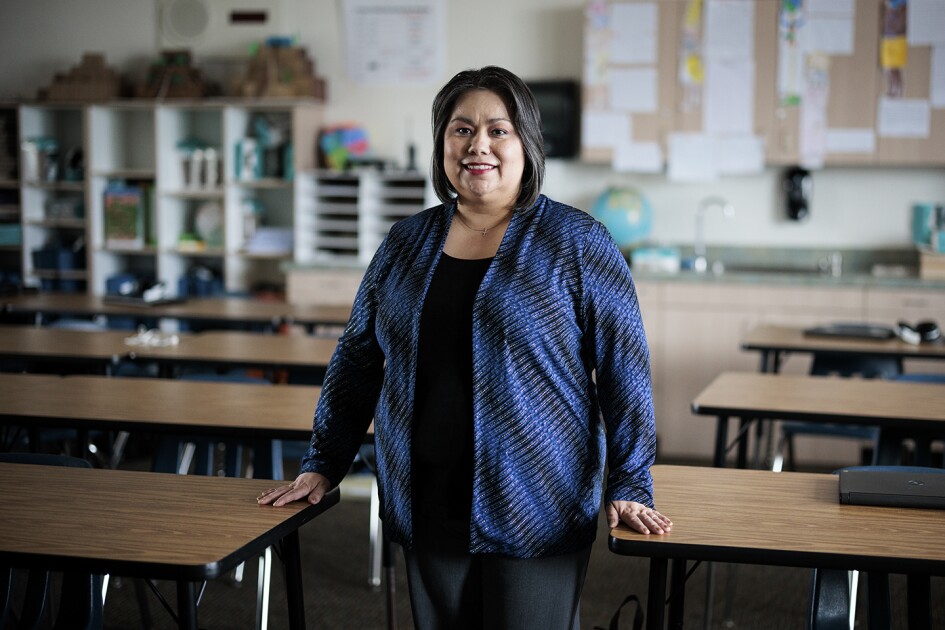New research has found that providing free school meals to all students regardless of their families’ income lowers discipline rates. But not because free food keeps students from getting “hangry"—the researchers believe that eliminating the stigma of qualifying for free and reduced-priced meals was what drove down the number of discipline referrals.
Researchers from the University of North Carolina and the U.S. Census Bureau compared schools in Oregon that started offering universal free school meals through the federal school meals program’s community eligibility provision to those who did not. The researchers linked school data on free and reduced-price lunch enrollment and discipline referrals to data from the census and tax records to get a granular look at how the policy affected different students.
The way schools distribute free and reduced-price meals makes it easy to pick out which kids come from families without a lot of money, said Thurston Domina, a professor at UNC’s school of education and one of the authors of the study. For example, students might have to stand in a special line in the cafeteria.
“We’ve got good research to suggest that students see that and that they associate school meals with poverty,” Domina said. “And we’ve got good research to suggest that stigma associated with poverty carries with students throughout the school day.”
There are some limitations to the study, said Domina. The study examined only Oregon schools and as a result, there are not many Black students in the sample. And it’s not clear how the effects of universal free meals would translate to affluent schools—schools only qualify for the community eligibility provision of the federal school meals program when they serve large numbers of students who are living in poverty.
Even so, Domina said in a conversation with Education Week that the findings hold a lot of valuable information for educators and policymakers, especially as a growing number of states have passed laws making school meals free to all students.
This conversation has been edited for length and clarity.
How did you determine that stigma was the issue?
In a lot of schools, there’s not a one-to-one relationship between family income and free lunch enrollment. There are a decent number of kids from low-income families who don’t enroll for free or reduced-price lunch.
And then there are a decent number of kids whose family incomes are relatively middle class who may enroll when their family goes through lean times and stay enrolled in the meal [program]. So, these relatively well-off kids get into free and reduced-price lunch.

Our hypothesis is that if stigma’s the mechanism, it should be the kids who had gotten the free meals who should benefit the most [regardless of whether their family was low-income or not].
And the kids who had previously gotten free meals are seeing the biggest reductions in suspensions when those free meals become available to all kids in their schools.
Kids from low-income families who had previously received free and reduced-price lunch had the biggest effect.
Relatively affluent kids who had already received free meals received the second biggest benefit in terms of their chances of being suspended. So, they were being marked as poor kids, and they were carrying around that stigma.
Is this because of student behavior changing or because of how teachers perceive and judge those students?
Both of those are outcroppings of stigma, right? The student behavior and the teacher perception are two different elements of stigma. It would be great to know the extent to which both are operating.
Suspension and exposure to exclusionary discipline in school is largely the interaction of two different things: what the student does and how the teacher perceives what they do. In many ways, those two things are inseparable, because teacher perceptions can drive student behavior, which can drive teacher perceptions, and on and on. It’s a vicious cycle.
How do you know that policy changes around discipline didn’t account for the drop in suspensions?
Because the decline in the schools that implemented the free meals continued and accelerated when they implemented the free meals. Whereas it was starting to level out in the schools that did not.
The study was in an environment in the 2010s where there was a lot of attention to exclusionary discipline. And schools across the state we’re working to find alternatives to exclusionary discipline. Universalizing school meals contributed to that effort in a way that not universalizing school meals just didn’t.
What is the big takeaway for education leaders and policymakers?
I’m speaking just for myself because this work is [a] collaboratory with the U.S. Census Bureau, [which] does not make policy recommendations.
But I think our findings are really encouraging for efforts to get free meals to more students. I think getting nutrition into kids’ bodies is just a good thing for a society to do. And I think that our research suggests that doing so can help create happier and healthier and more egalitarian social environments in schools.









